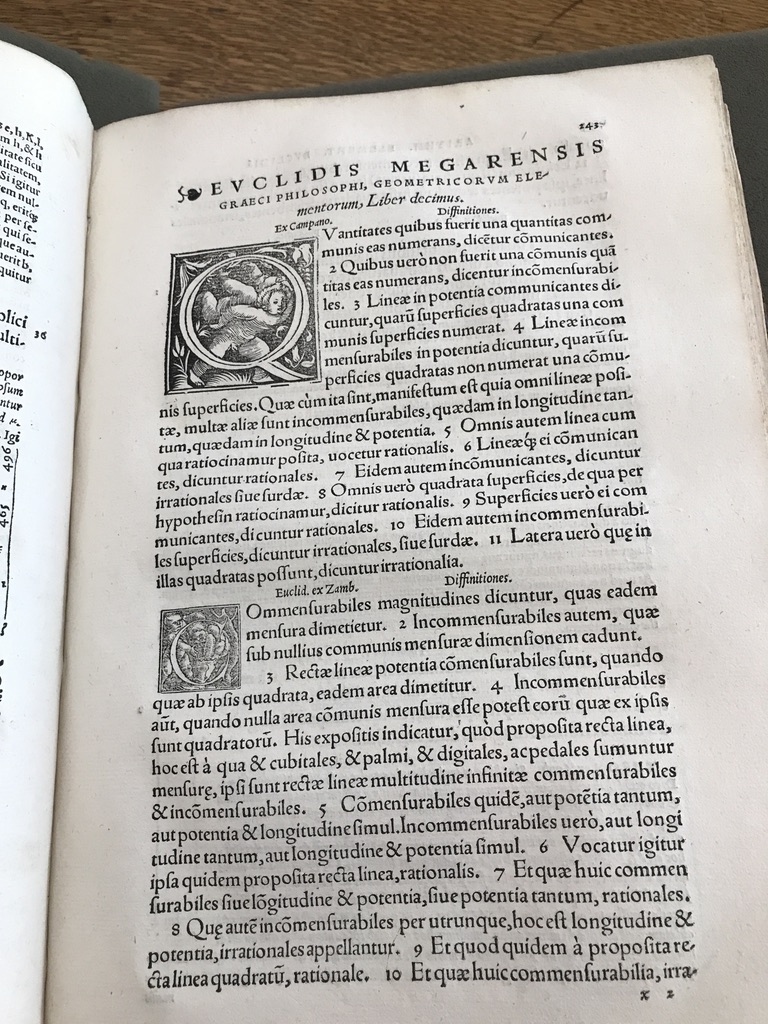After this book was printed in 1546, we have a long time in which we don’t know where it was. Inside the front cover, we do have some information. We have a newspaper notice, which someone wrote with a red pencil that it was “Avril 1927.” I don’t speak French, but I know enough that this is from April 1927.
We also have a handwritten name in black pen, who must have owned the book at some point. I cannot read the writer’s handwriting. Then we have a nameplate that says this book is part of the Clarence Seymour Wadsworth Collection of books, and another one that says it is part of the Wesleyan University Library. So, at some point, Wadsworth collected this book and added it to his collection. Is this French article how he came upon this book? And then his collection became part of the Wesleyan University Library.
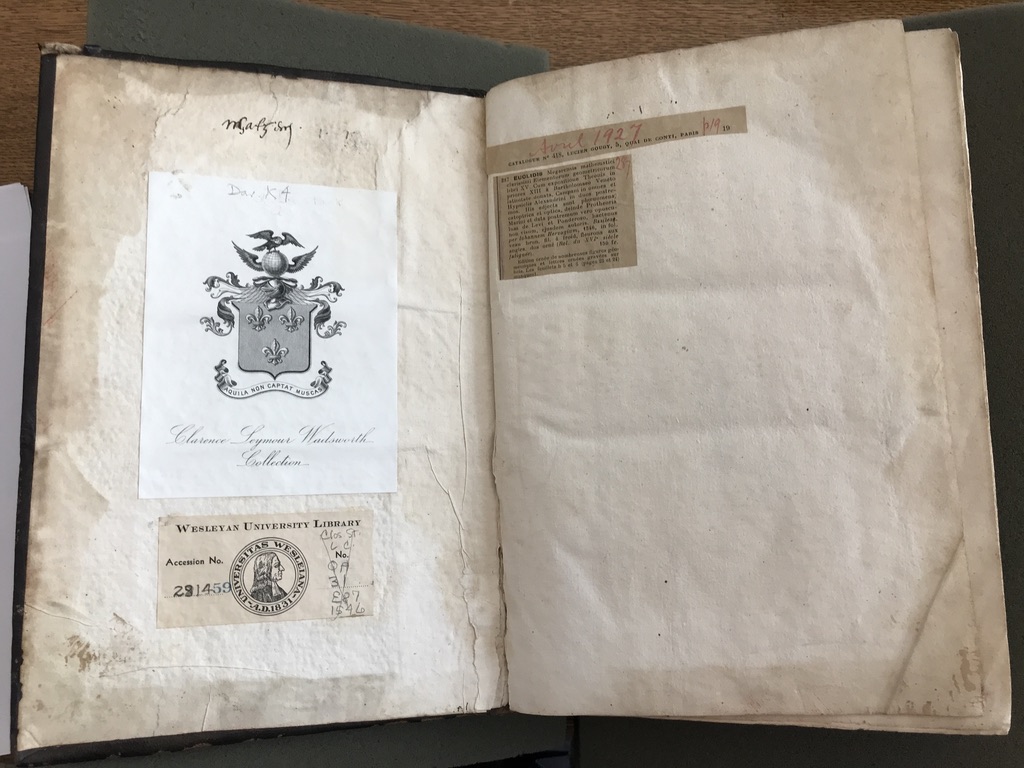
Inside the back cover, we can see a library due date paper pasted to the book. It is completely blank. It appears as if no one ever checked this book out. Considering that this book is written in Latin, and Wesleyan’s classes are in English, I am not surprised. I have a friend who is a classical languages professor. I asked her if she has ever had her students work on translating and examining this book as part of her Latin classes. She laughed at me, so I will take that as a no.
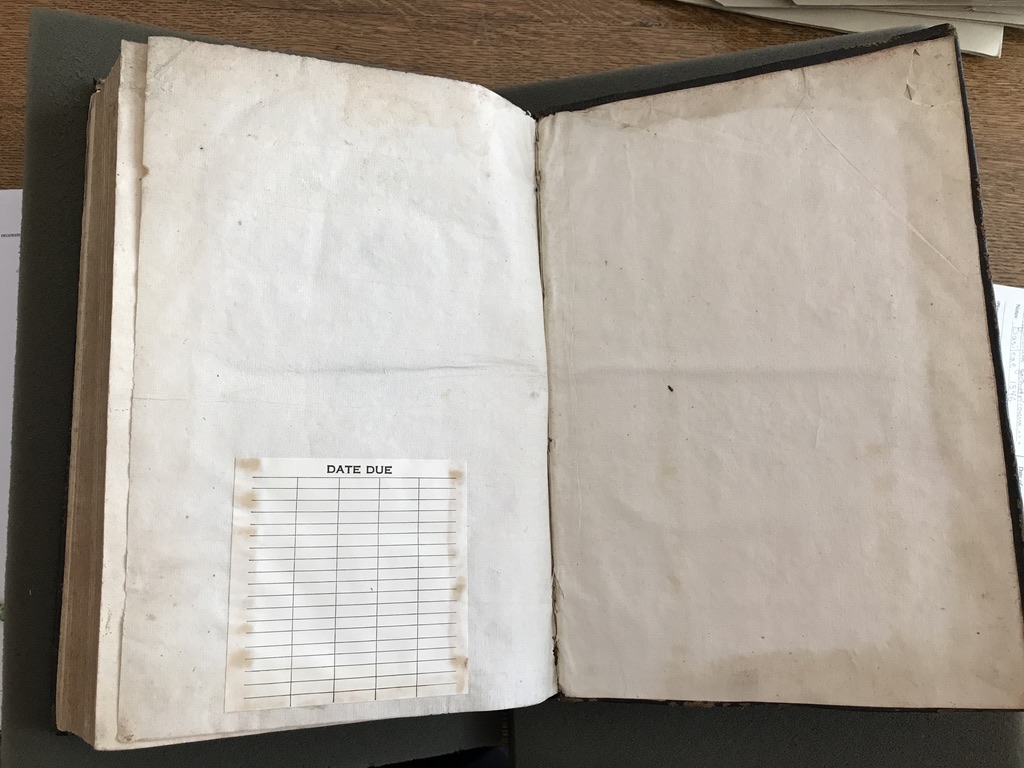
Most of the pages are whole, but there are a few with rips in them. None of the rips are very large.

At the beginning of the book, there are many discolorations. Maybe someone dropped food or drink while reading the book? These only occur towards the beginning, as if the beginning is all anyone ever looks at.
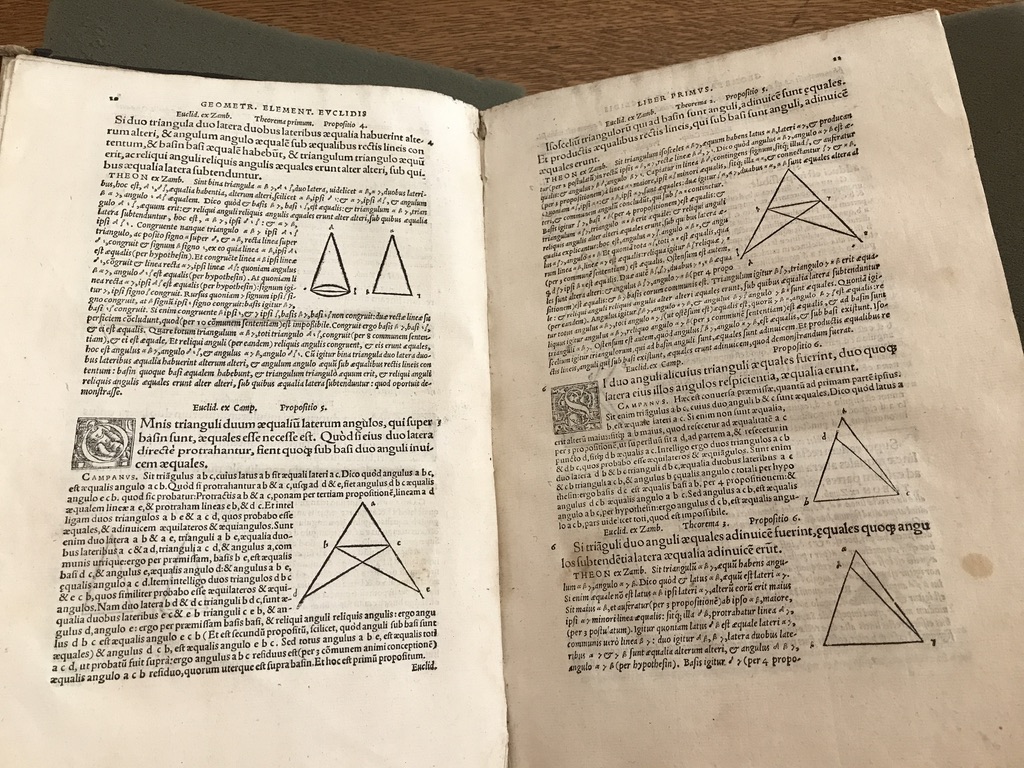
Towards the back of the book, I found a dead spider that had been pressed in there. There is a smudge on the opposite page where its juices must have soaked in. This made me feel like maybe I am the intended reader of the book as I’m missing a chunk of flesh out of my left shin from a spider bite. And my check engine light on my car came on 11 years ago because of spiders in the engine. And my later paternal grandfather, before he passed away, even though he had dementia, he knew I had something to do with spiders.

The outside of the book isn’t in the best shape. I’m unsure of what caused all of the damage to it other than time.
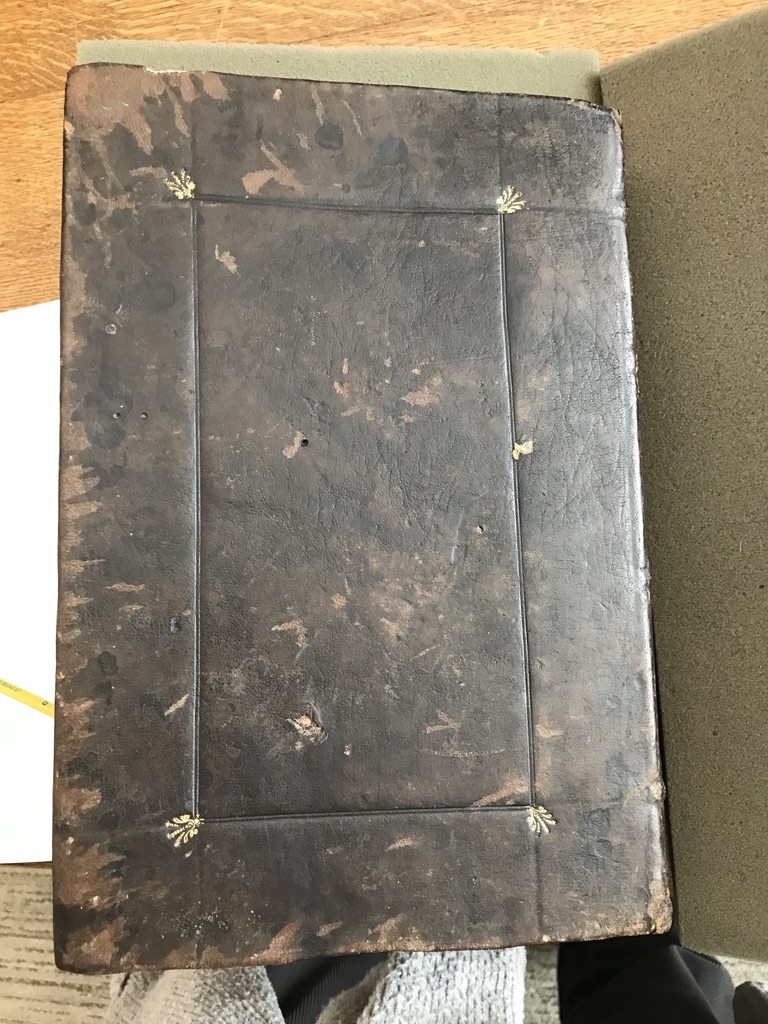
But, once you get inside the book, and get beyond the beginning, the pages are all in great shape. If you only had looked at the last three-quarters of the book, you would assume that no one had ever opened it before. And I think most of this book will remain looking unread. English translations of this book exist. Mathematics isn’t taught in Latin anymore. There is no need to use this book to learn math from or about Euclid. I would see it more now as a trophy than useful.
When this book was printed in the 16th century, Latin was the language of science, hence why it would have made sense to have it then, as Latin was still used for scientific papers and communication well into the 18th century. When Isaac Newton published his Principia in the late 17th century, it was also in Latin. And I imagine someone who purchased his book would also be the type to own Euclid’s book in Latin. Before Michael Faraday (died 1867), scientific pursuits were something done by the wealthy, not the lower or middle class, so I imagine that this book was originally purchased by someone with money and land, who was able to spend leisure time doing math and science instead of working for a living.
Now, I think having the book in a library is a good place for it, as it makes it more accessible to the public. Otherwise, this book would only be in the home of a wealthy person, to show that they can afford to own a 16th century book, regardless if they are interested in the content or not.
